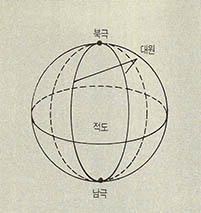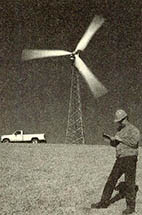약 6천5백만년 전 지상의 날짐승 가운데 가장 큰 덩치를 가졌던 '프테로사우루스'가 갑자기 멸종해 버렸다. '프테로사우루스'의 사라짐은 우리에게 가장 까다로운 수수께끼의 하나로 볼 수 있는 의문을 남겨 주었다. 즉 몸의 크기가 일부는 상당히 큰 비행기만했었는데 이 날개달린 파충류가 어떻게 날 수 있었을까?
과학자들은 아직도 뭔가뭔지 모르고 있다. 그러나 몇가지 매혹적인 가설이 나와있다.
이 날으는 파충류(그리스어로는 날 도마뱀)는 이미 2억년전에 진화를 시작했다. '프테로사우루스'의 어떤 것은 겨우 참새만 했으나 어떤 것은 지상에서 존재했던 날짐승중 가장 큰 것이었다.
7천만년전쯤에 살았던 '프테라노돈'(그리스어로 날개-이빨없음)이 27피트(8.2m)나 되는 날개길이를 가졌는데 이는 '알바트로스'(바다에 사는 큰 새) 날개길이의 세배나 되는 셈이다. 확실히 이 날짐승은 몸이 온통 날개뿐이어서 무게는 40파운드(18.1kg)도 넘지 않았을 것같다.
1971년에 날개길이가 50피트(15.2m)나 되는 프테로사우루스의 유적이 '텍사스'에서 발견되었다. 이곳의 프테로사우루스는 분명히 지금껏 생존했던 어떤 조류보다도 무거웠을 것이다.
이런 유적과 유럽에서 최근에 발견된 엉덩이뼈 화석 등을 포함해 여러가지를 검토함으로써 학자들은 이제 수수께끼를 풀려고 하고 있다.
프테로사우루스의 화석 유적 말고는 이 무거운 생물체가 어떻게 날 수 있었나를 알아내는 유일한 단서는 아직까지 생존하고 있는 세가지의 다른 조류들을 살피는 것이다.
날으는 것은 어려운 일이다. 왜냐하면 날아오르고 그 희박한 매질(공기) 속에서 지탱하도록 공기를 밀쳐내기 위해서는 집중된 에너지가 필요하기 때문이다. 파충류처럼 찬피동물로서 현재 날 수 있는 종(種)은 곤충 뿐이다. 피가 차기 때문에 곤충은 상대적으로 낮은 수준의 에너지를 생산한다. 그렇지만 몸체가 작기 때문에 견디어낸다.
곤충은 너무 작아 지구의 인력이 약하게 작용할 수밖에 없으며 비록 공기가 희박하더라도 인력을 부분적으로 억제해 곤충이 공중에 떠있는데 충분한 도움이 된다.
가장 큰 곤충은 '골리아드 딱정벌레'인데 이것도 경우 문게가 1백13g밖에 안된다.
나는 동물중 다른 두 부류 즉 새와 박쥐는 더운 피를 갖고 있으며 따라서 날으는데 필요한 에너지를 훨씬 많이 모을 수 있다. 이들의 더운 피는 방열(防熱)이 되어야한다. 힘들여 생산해낸 에너지가 방사열로 없어져도 좋을 만큼 여유가 없기 때문이다. 이런 이유로 새들은 깃털을 갖고 있다. 깃털은 열손실을 억제하는데 매우 효과적인 수단이다. 박쥐는 약간 덜 효과적이지만 털로써 손실을 줄인다.
박쥐와 새들은 곤충보다는 상당히 몸이 크지만 이렇게 많은 에너지를 낼 수 있기에 날 수 있는 것이다. 물론 몸이 크다 해도 날지 못하는 다른 동물처럼 크지는 않다.
박쥐중 가장 큰 것은 인도네시아산으로 과일을 먹고산다. 이 박쥐는 길이가 40cm이며 날개의 길이는 1m83cm나 된다. 몸뚱이는 대부분 날개막(膜)으로 되어 있다. 그러나 전체 몸무게는 1kg이 채 되지 않는다. 이것은 가장 큰 곤충 무게의 8배나 되는 셈이다.
가장 몸무게가 큰 새는 동·남아프리카에 사는 '코리 들칠면조'로 18kg이나 되는 것으로 알려졌는데 이는 가장 큰 박쥐의 몸무게보다 20배나 큰 것이다. 이 무게로는 간신히 날 수 있다.
어떤 알바트로스는 이 정도로 무게가 나가지는 않지만 쫙 폈을때의 날개길이는 3m까지 된다.
'프테로사우루스'는 박쥐와 같은 막으로된 날개를 가졌었다. 그렇지만 박쥐의 경우 막이 엄지를 제외한 모든 발가락을 덮고 있지만 '프테로사우루스'의 막은 다른것보다 훨씬 크게 자란 네째 발가락에 붙어 있었다. 첫째부터 세째발가락은 작은 발톱달린 발가락에 불과했고 이것은 날개 밖으로 튀어나와 있었다.
그렇다면 과연 '프테로사우어'가 어떻게 날 수 있었을까?
현재의 모든 파충류는 찬피를 갖고 있으며 새나 포유류에 비해 둔하다. '프테로사우루스'도 우선 찬피동물이었다고 봐야한다. 그래서 잘 날 수 있을 만큼 충분히 에너지 처리를 할 수 없었다. 그리하여 프테로사우루스가 힘겹게 높은 언덕에 기어 올라가 미끄러지듯 아래로 뛰어내리면서 먹이를 잡았다는 시나리오가 만들어졌다.
그러나 이 일은 엄청나게 어려웠을 것으로 보인다. 따라서 프테로사우루스가 진짜 날개를 퍼덕이는 날짐승으로 보려는 경향이 짙어졌다. 날짐승이라면 큰 에너지가 필요하므로 보다 많은 과학자들이 프테로사우루스는 털로 뒤덮힌 더운피 동물이었음이 틀림없을 것이라고 생각하기 시작했다.(깃털은 아니다. 깃털을 가지고 있었다면 화석을 통해 흔적을 발견했을 것이지만 아직 아무것도 발견하지 못했다)
'프테로사우루스'의 날으는 어려움을 살피기 위해 모의비행까지 준비 해야만 했다.
지난 86년 5월 워싱턴 D.C 근처 앤드류공군기지에서 텍사스에서 발견된 것과 비슷한 프테로사우루스 모형이 선보였다. 20kg이나 되는 이 거대한 모형은 날개길이가 5m49cm나 되었다. 70만 달러나 들여 스미소니언 박물관용으로 만들어진 것이다. 모형은 공중에서 단지 1분 떠있다가 국군의 날 구경꾼들이 지켜보는가운데 추락, 부서지고 말았다.
프테로사우루스가 어찌해서 날 수 있었다해도 어떻게 걸을 수 있었을까? 최근 두 조(組)의 프테로사우루스의 엉덩이뼈가 서독에서 발굴되었는데 이것들은 심하게 파손돼 있지는 않았다. 이뼈들로써 프테로사우루스의 넓적다리뼈는 바깥쪽으로 벌어져 있음을 유추할 수 있다. 그럴경우 프테로사우루스는 땅위에서 어기적거리며 걷는 볼품없는 행보자였을 것같다. 우리는 달라서 프테로사우루스가 날지 않을 때에는 나무나 절벽에 매달려 있었을 것이라고 한걸음 나아가 추측해 나갈 수 있을 것같다.
달리말하면 프테로사우루스는 여러가지면에서 거대한 박쥐와 같았다는 것이다. 그러나 뼈의 구조는 파충류와 같았다. 모든 점에서 프테로사우루스는 박쥐처럼 새기를 낳기보다 알을 낳았을 것으로 여겨진다.
About 65 million years ago, the pterosaurs, which included the largest animals that ever flew, died out quite suddenly. Their disappearance has left us with some challenging questions, including one of the most puzzling: how did these winged reptiles, some of whose dimensions approximated a fairly large airplane, manage to fly? Scientists remain perplexed, but several fascinating theories have emerged.
The flying reptiles called pterosaurs (Greek for "wing-lizards") evolved as early as 200million years ago. Though some pterosaurs were no larger than sparrows, others were the largest flying animals that ever existed. About 70 million years ago, the "pteranodon"(Greek for "wing-toothless") had a wingspread of up to 27 feet, almost three times that of an albatross. To be sure, it was almost all wing and may not have weighed more than 40 pounds.
In 1971, however, remains of a pterosaur were located in Texas whose wing-span may have been as wide as 50 feet. It surely would have been heavier than any other flying animal that ever lived. By studying those remains and others including fossilized hip bones recently discovered in Europe, scientists are trying to work out the puzzle. The only clues we have as to how these massive creatures flew, other than the pterosaurs's fossilized remains, come from examining the three other groups of flying animals that still exist.
Flying is a difficult task and it takes concentrated energy to beat wings against the air in such a way as to rise upward and remain supported on that thin medium. Today, the only flying species that, like reptiles, are cold-blooded, are the insects. Because they are cold-blooded, they produce energy at relatively low levels. They get away with it because they are small, so small that Earth's gravitational pull on them is weak, and even thin air is sufficiently buoyant to cancel out part of that pull. The largest insect is the Goliath beetle, which weighs not quite four onces.
Two other groups, birds and bats, are warm-blooded, and can, therefore, pump far larger concentrations of energy into the task of flying. Their warmbloodedness must be insulated, since not much of the energy produced with such difficulty can afford to be lost as radiant heat. Birds, therefore, have feathers, a particularly efficient method of cutting down on heat loss. Bats have a slightly less efficient covering of hair.
Bats and birds, thanks to their greater energy production, can fly even though they are considerably larger than insects, but even so, they aren't as large as non-flying animals.
The largest bat is a fruit-eater from Indonesia. It can be to 16 inches long and has a wing-spread of nearly 6 feet. Its body is mostly wing-membrane, however, and its total weight doesn't quite reach 2 pound--eight time the weight of the largest insect.
The heaviest bird capable of flight, the Kori bustard of eastern and southern Africa, may weigh as much as 40 pounds, 20 times that of the largest bat. At that weight, however, in can just barely fly. Some albatrosses, which are not quite that heavy, have the widest wing spread--up to 10 feet.
The pterosaurs has membranous wings like the bat, but whereas,in bats, the membrane stretch over all the fingers but the thumb, the pterosaurs' membrane was attached to a vastly overgrown fourth finger. The first three fingers remained as small clawed digits outside the wing.
So, how did they fly?
Today, all reptiles are cold-blooded and tend to be sluggish in comparison with birds and mammals. Naturally, then, it was taken for granted, at first, that they pterosaurs were cold blooded, too, and that therefore couldn't dispose of enough energy to fly efficiently. Scenarios were worked out in which pterosaurs painfully downward, catching their prey.
This seemed like it would have been terribly difficult for them, however, and there has been an increasing tendency to view them as true wing-beating fliers. Since this takes enormous energy, more and more scientists have begun to assume that they must have been warm-blooded, which would mean that they were covered with hair. (Not feather, If they had feathers we would probably have found impressions of them on and occasional pterosaurs fossil, but we haven's)
To appreciate the difficulty flight must have posed for these creatures, consider, the May, 1986. demonstration at Andnews Air Force Base near Washington,D.C., of a pterosaurs like the on discovered in Texas. The giant 44-pound model, which had a wingspan of 18 feet, was constructed for the Smithsonian Institution at a cost of $700,000. It was airborne for only one minute before it fell apart and crashed to the ground before a crowd of Armed Forces Day spectators.
But even if pterosaurs somehow did manage to fly,how did they walk? Recently, two sets of pterosaur hip bones were located in West Germany, and they were not badly crushed. From these it can be deduced that the pterosaurs's thigh bones spread outward. In that case, it is likely that the pterosaurs waddled on the ground and were clumsy walkers. We might, therefore, further deduce that, when not flying, they hung from trees or cliffs.
They were, in other words, like gigantic bats in many ways, but their bone structure was that of reptiles, and in all likelihood, they laid eggs rather than giving birth to living young, as bats do.
과학자들은 아직도 뭔가뭔지 모르고 있다. 그러나 몇가지 매혹적인 가설이 나와있다.
이 날으는 파충류(그리스어로는 날 도마뱀)는 이미 2억년전에 진화를 시작했다. '프테로사우루스'의 어떤 것은 겨우 참새만 했으나 어떤 것은 지상에서 존재했던 날짐승중 가장 큰 것이었다.
7천만년전쯤에 살았던 '프테라노돈'(그리스어로 날개-이빨없음)이 27피트(8.2m)나 되는 날개길이를 가졌는데 이는 '알바트로스'(바다에 사는 큰 새) 날개길이의 세배나 되는 셈이다. 확실히 이 날짐승은 몸이 온통 날개뿐이어서 무게는 40파운드(18.1kg)도 넘지 않았을 것같다.
1971년에 날개길이가 50피트(15.2m)나 되는 프테로사우루스의 유적이 '텍사스'에서 발견되었다. 이곳의 프테로사우루스는 분명히 지금껏 생존했던 어떤 조류보다도 무거웠을 것이다.
이런 유적과 유럽에서 최근에 발견된 엉덩이뼈 화석 등을 포함해 여러가지를 검토함으로써 학자들은 이제 수수께끼를 풀려고 하고 있다.
프테로사우루스의 화석 유적 말고는 이 무거운 생물체가 어떻게 날 수 있었나를 알아내는 유일한 단서는 아직까지 생존하고 있는 세가지의 다른 조류들을 살피는 것이다.
날으는 것은 어려운 일이다. 왜냐하면 날아오르고 그 희박한 매질(공기) 속에서 지탱하도록 공기를 밀쳐내기 위해서는 집중된 에너지가 필요하기 때문이다. 파충류처럼 찬피동물로서 현재 날 수 있는 종(種)은 곤충 뿐이다. 피가 차기 때문에 곤충은 상대적으로 낮은 수준의 에너지를 생산한다. 그렇지만 몸체가 작기 때문에 견디어낸다.
곤충은 너무 작아 지구의 인력이 약하게 작용할 수밖에 없으며 비록 공기가 희박하더라도 인력을 부분적으로 억제해 곤충이 공중에 떠있는데 충분한 도움이 된다.
가장 큰 곤충은 '골리아드 딱정벌레'인데 이것도 경우 문게가 1백13g밖에 안된다.
나는 동물중 다른 두 부류 즉 새와 박쥐는 더운 피를 갖고 있으며 따라서 날으는데 필요한 에너지를 훨씬 많이 모을 수 있다. 이들의 더운 피는 방열(防熱)이 되어야한다. 힘들여 생산해낸 에너지가 방사열로 없어져도 좋을 만큼 여유가 없기 때문이다. 이런 이유로 새들은 깃털을 갖고 있다. 깃털은 열손실을 억제하는데 매우 효과적인 수단이다. 박쥐는 약간 덜 효과적이지만 털로써 손실을 줄인다.
박쥐와 새들은 곤충보다는 상당히 몸이 크지만 이렇게 많은 에너지를 낼 수 있기에 날 수 있는 것이다. 물론 몸이 크다 해도 날지 못하는 다른 동물처럼 크지는 않다.
박쥐중 가장 큰 것은 인도네시아산으로 과일을 먹고산다. 이 박쥐는 길이가 40cm이며 날개의 길이는 1m83cm나 된다. 몸뚱이는 대부분 날개막(膜)으로 되어 있다. 그러나 전체 몸무게는 1kg이 채 되지 않는다. 이것은 가장 큰 곤충 무게의 8배나 되는 셈이다.
가장 몸무게가 큰 새는 동·남아프리카에 사는 '코리 들칠면조'로 18kg이나 되는 것으로 알려졌는데 이는 가장 큰 박쥐의 몸무게보다 20배나 큰 것이다. 이 무게로는 간신히 날 수 있다.
어떤 알바트로스는 이 정도로 무게가 나가지는 않지만 쫙 폈을때의 날개길이는 3m까지 된다.
'프테로사우루스'는 박쥐와 같은 막으로된 날개를 가졌었다. 그렇지만 박쥐의 경우 막이 엄지를 제외한 모든 발가락을 덮고 있지만 '프테로사우루스'의 막은 다른것보다 훨씬 크게 자란 네째 발가락에 붙어 있었다. 첫째부터 세째발가락은 작은 발톱달린 발가락에 불과했고 이것은 날개 밖으로 튀어나와 있었다.
그렇다면 과연 '프테로사우어'가 어떻게 날 수 있었을까?
현재의 모든 파충류는 찬피를 갖고 있으며 새나 포유류에 비해 둔하다. '프테로사우루스'도 우선 찬피동물이었다고 봐야한다. 그래서 잘 날 수 있을 만큼 충분히 에너지 처리를 할 수 없었다. 그리하여 프테로사우루스가 힘겹게 높은 언덕에 기어 올라가 미끄러지듯 아래로 뛰어내리면서 먹이를 잡았다는 시나리오가 만들어졌다.
그러나 이 일은 엄청나게 어려웠을 것으로 보인다. 따라서 프테로사우루스가 진짜 날개를 퍼덕이는 날짐승으로 보려는 경향이 짙어졌다. 날짐승이라면 큰 에너지가 필요하므로 보다 많은 과학자들이 프테로사우루스는 털로 뒤덮힌 더운피 동물이었음이 틀림없을 것이라고 생각하기 시작했다.(깃털은 아니다. 깃털을 가지고 있었다면 화석을 통해 흔적을 발견했을 것이지만 아직 아무것도 발견하지 못했다)
'프테로사우루스'의 날으는 어려움을 살피기 위해 모의비행까지 준비 해야만 했다.
지난 86년 5월 워싱턴 D.C 근처 앤드류공군기지에서 텍사스에서 발견된 것과 비슷한 프테로사우루스 모형이 선보였다. 20kg이나 되는 이 거대한 모형은 날개길이가 5m49cm나 되었다. 70만 달러나 들여 스미소니언 박물관용으로 만들어진 것이다. 모형은 공중에서 단지 1분 떠있다가 국군의 날 구경꾼들이 지켜보는가운데 추락, 부서지고 말았다.
프테로사우루스가 어찌해서 날 수 있었다해도 어떻게 걸을 수 있었을까? 최근 두 조(組)의 프테로사우루스의 엉덩이뼈가 서독에서 발굴되었는데 이것들은 심하게 파손돼 있지는 않았다. 이뼈들로써 프테로사우루스의 넓적다리뼈는 바깥쪽으로 벌어져 있음을 유추할 수 있다. 그럴경우 프테로사우루스는 땅위에서 어기적거리며 걷는 볼품없는 행보자였을 것같다. 우리는 달라서 프테로사우루스가 날지 않을 때에는 나무나 절벽에 매달려 있었을 것이라고 한걸음 나아가 추측해 나갈 수 있을 것같다.
달리말하면 프테로사우루스는 여러가지면에서 거대한 박쥐와 같았다는 것이다. 그러나 뼈의 구조는 파충류와 같았다. 모든 점에서 프테로사우루스는 박쥐처럼 새기를 낳기보다 알을 낳았을 것으로 여겨진다.
About 65 million years ago, the pterosaurs, which included the largest animals that ever flew, died out quite suddenly. Their disappearance has left us with some challenging questions, including one of the most puzzling: how did these winged reptiles, some of whose dimensions approximated a fairly large airplane, manage to fly? Scientists remain perplexed, but several fascinating theories have emerged.
The flying reptiles called pterosaurs (Greek for "wing-lizards") evolved as early as 200million years ago. Though some pterosaurs were no larger than sparrows, others were the largest flying animals that ever existed. About 70 million years ago, the "pteranodon"(Greek for "wing-toothless") had a wingspread of up to 27 feet, almost three times that of an albatross. To be sure, it was almost all wing and may not have weighed more than 40 pounds.
In 1971, however, remains of a pterosaur were located in Texas whose wing-span may have been as wide as 50 feet. It surely would have been heavier than any other flying animal that ever lived. By studying those remains and others including fossilized hip bones recently discovered in Europe, scientists are trying to work out the puzzle. The only clues we have as to how these massive creatures flew, other than the pterosaurs's fossilized remains, come from examining the three other groups of flying animals that still exist.
Flying is a difficult task and it takes concentrated energy to beat wings against the air in such a way as to rise upward and remain supported on that thin medium. Today, the only flying species that, like reptiles, are cold-blooded, are the insects. Because they are cold-blooded, they produce energy at relatively low levels. They get away with it because they are small, so small that Earth's gravitational pull on them is weak, and even thin air is sufficiently buoyant to cancel out part of that pull. The largest insect is the Goliath beetle, which weighs not quite four onces.
Two other groups, birds and bats, are warm-blooded, and can, therefore, pump far larger concentrations of energy into the task of flying. Their warmbloodedness must be insulated, since not much of the energy produced with such difficulty can afford to be lost as radiant heat. Birds, therefore, have feathers, a particularly efficient method of cutting down on heat loss. Bats have a slightly less efficient covering of hair.
Bats and birds, thanks to their greater energy production, can fly even though they are considerably larger than insects, but even so, they aren't as large as non-flying animals.
The largest bat is a fruit-eater from Indonesia. It can be to 16 inches long and has a wing-spread of nearly 6 feet. Its body is mostly wing-membrane, however, and its total weight doesn't quite reach 2 pound--eight time the weight of the largest insect.
The heaviest bird capable of flight, the Kori bustard of eastern and southern Africa, may weigh as much as 40 pounds, 20 times that of the largest bat. At that weight, however, in can just barely fly. Some albatrosses, which are not quite that heavy, have the widest wing spread--up to 10 feet.
The pterosaurs has membranous wings like the bat, but whereas,in bats, the membrane stretch over all the fingers but the thumb, the pterosaurs' membrane was attached to a vastly overgrown fourth finger. The first three fingers remained as small clawed digits outside the wing.
So, how did they fly?
Today, all reptiles are cold-blooded and tend to be sluggish in comparison with birds and mammals. Naturally, then, it was taken for granted, at first, that they pterosaurs were cold blooded, too, and that therefore couldn't dispose of enough energy to fly efficiently. Scenarios were worked out in which pterosaurs painfully downward, catching their prey.
This seemed like it would have been terribly difficult for them, however, and there has been an increasing tendency to view them as true wing-beating fliers. Since this takes enormous energy, more and more scientists have begun to assume that they must have been warm-blooded, which would mean that they were covered with hair. (Not feather, If they had feathers we would probably have found impressions of them on and occasional pterosaurs fossil, but we haven's)
To appreciate the difficulty flight must have posed for these creatures, consider, the May, 1986. demonstration at Andnews Air Force Base near Washington,D.C., of a pterosaurs like the on discovered in Texas. The giant 44-pound model, which had a wingspan of 18 feet, was constructed for the Smithsonian Institution at a cost of $700,000. It was airborne for only one minute before it fell apart and crashed to the ground before a crowd of Armed Forces Day spectators.
But even if pterosaurs somehow did manage to fly,how did they walk? Recently, two sets of pterosaur hip bones were located in West Germany, and they were not badly crushed. From these it can be deduced that the pterosaurs's thigh bones spread outward. In that case, it is likely that the pterosaurs waddled on the ground and were clumsy walkers. We might, therefore, further deduce that, when not flying, they hung from trees or cliffs.
They were, in other words, like gigantic bats in many ways, but their bone structure was that of reptiles, and in all likelihood, they laid eggs rather than giving birth to living young, as bats do.

















